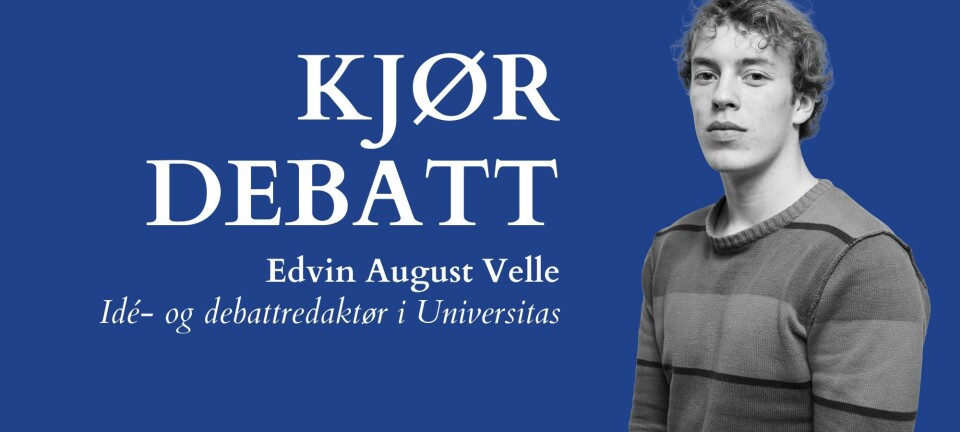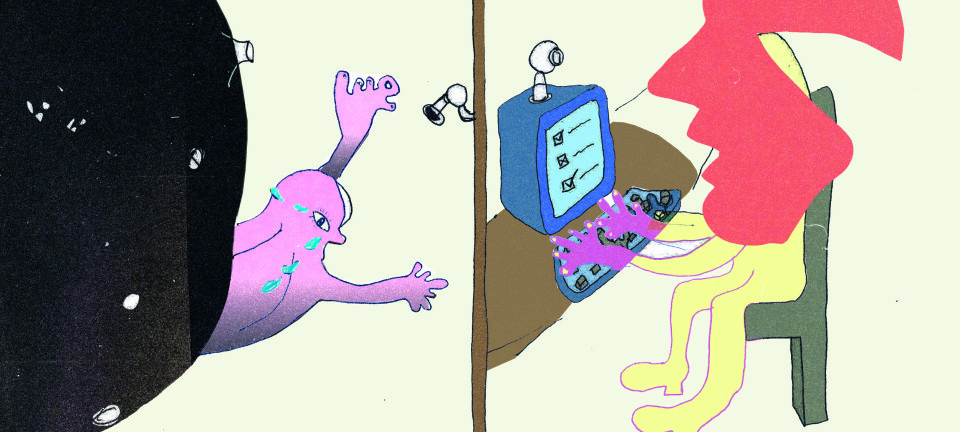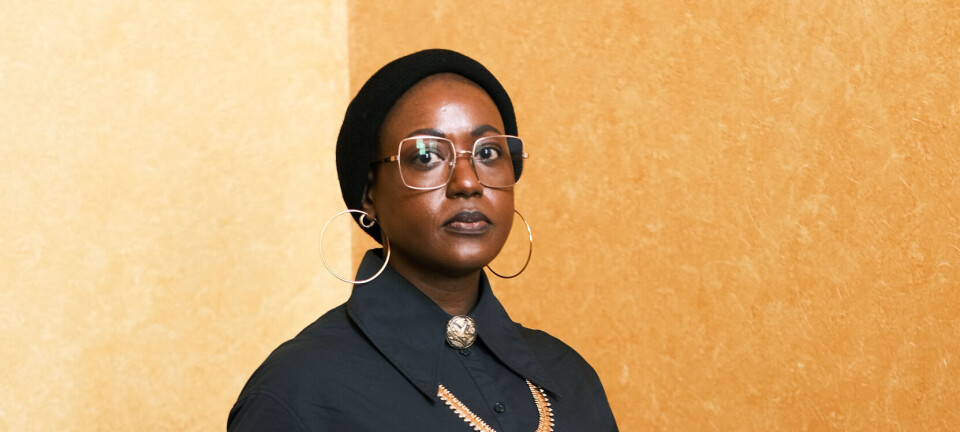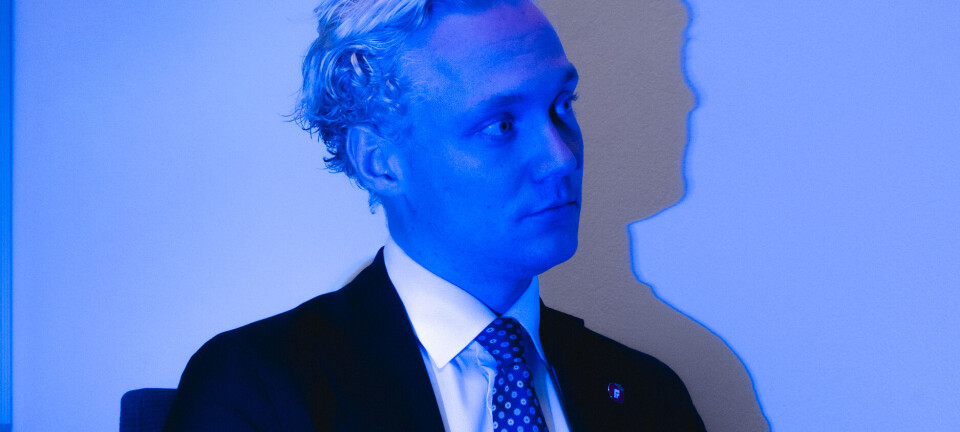
In Conversation: Therapy Dog
Paw-sitive vibes only: a therapy dog’s perspective on student mental health.
Mental health is a fundamental need for everyone, yet mental health struggles are often hidden. Although support is accessible, seeking help can be difficult.
For students at the University of Oslo (UiO), Marve, the therapy dog, has been a calming presence for the past couple of years, offering a safe space to decompress and release stress. His gentle paws, wagging tail, and empathetic gaze provide comfort in ways that humans sometimes can’t. From his perspective, student mental health isn’t just about words—it’s about connection, presence, and the silent comfort of a furry friend who understands.
I had the chance to have a heart-to-heart with Marve, the foremost four-legged mental health expert at Blindern, to learn about his unique perspective on students’ mental health and the role he plays in their well-being. This conversation was made possible through insights shared by Marve’s handler, Ann-Jonette Friberg from Terapihuskyene, and Julia Piombino and Maja Sjølyst Sørum from HFSU (Studentutvalget ved Det humanistiske fakultet), the organizers of this initiative at UiO.

Hello Marve! Nice to meet you! It’s so nice to be able to sit down and discuss with you about students’ mental health at UiO. So, how do you think these students are feeling?
(Marve gives a quick wag of his tail, looks up, and seems to reflect deeply before answering.)
—Hello Elena, nice to meet you too! Mental health in Norway is a big challenge, especially during wintertime. I believe that students are in a particularly vulnerable situation as most of them are far away from home, juggling jobs, their studies, exams, tightening finances and social life. That’s a lot to carry and it can get overwhelming for anybody.
—I started visiting UiO in 2022 and since then I have met many students with different needs. Some are stressed about their exams, others miss their family and pets, and a few just feel a bit lost in the big city. But I always try to be there, offering a friendly face and a moment of calm amidst the chaos.
You seem to have a soothing effect even on the most anxious student, you are magical Marve! What’s your secret?
(Marve gives a soft woof and a thoughtful look, collecting his thoughts before answering the question.)
—For me, silence is the key. With me, students can clear their minds and enjoy the moment we share, slowing down and relaxing. In the hustle and bustle of everyday life humans—and let me tell you, even dogs!—often forget to pause and just breathe.
—There have been times when a student is clearly overwhelmed, trying to cram in the last bits of knowledge for an exam. After just a few minutes of petting and breathing together, I can see the change in them—suddenly, they stand up a little taller, and their shoulders relax. It’s like I helped them hit the reset button. That feeling is incredible!
It truly sounds like a superpower, Marve! How do you feel about working with students, compared to other groups of people?
(Marve’s eyes light up and he energetically wags his tail in excitement.)
—I LOVE working with students! I get lots of smiles! Some students visibly calm down, and some even have a good cry in my fur. It’s nice to be a safe space for them to release whatever they’re feeling. It really warms my heart to see how just a few minutes of peace and quiet can transform all that stress into a contagious, serene smile. They carry that smile with them after our session and share it with their friends, spreading positive vibes and calm.

—Oh, and some students bring their friends to my sessions, while others come on their own—but they never leave alone! Something magical happens during the group sessions. Students with similar struggles bond and connect, feeling less lonely and more understood.
—Once, an international student, feeling isolated and missing home, came to me during a session. By the end of our time together, they had met another student who was feeling the same way. The two exchanged contact information, and I heard from Anna, my handler, that they kept in touch after that day. It's heartwarming to witness how a little connection can make such a difference!
And how does it feel for you to be exposed to a lot of heavy emotions? Do you sometimes get a bit overwhelmed?
(Marve pauses and looks thoughtfully at the floor, his ears twitching slightly as if processing the question.)
—Well, it can be intense at times, but I’ve been trained to handle it. I’m a professional, after all! It’s important for me to maintain a calm and grounded presence. If I feel overwhelmed, my handler Anna is there to guide me and help me manage my energy.
—I’m very tuned in to students' emotions. Greeting everyone with a wagging tail and making sure they get a chance to pet me is a normal part of my sessions. If I feel like I need a break, I’ll just go lie down on my special blanket. Anna is always there to check in with me too. It’s a team effort!

What drove you to start this career? Have you also been a student, perhaps at a secret dog university somewhere out in Nordmarka?
(Marve’s tail wags with pride as he seems to reminisce.)
—Ah, you’ve caught me! I did attend a special canine training program where I learned all sorts of useful skills, but I can’t reveal all the details of my schooling—it’s top-secret dog business! It all started with an extensive mentality test to see if I could handle this work. Then I had to pass a practical exam. From when I was a tiny puppy, I was trained not only by Anna but also at training camps with other therapy dogs. I’ve learned to stay calm, be friendly, and interact with strangers. I also know when I need a break! It’s all about balance, you know?
—I’ve always had a calm and gentle nature, and I knew I could make a real difference in people’s lives. I actually followed in the paw-steps of my mum Tuna, who was an experienced therapy dog herself. It was her who first was in charge of the therapy program at UiO, and when she retired I stepped in.
On campus you have a lot of human colleagues offering different types of support to students. How do you think all of these services cater to students’ needs and complement each other?
(Marve pauses, sitting quietly for a moment as he looks around, his tail gently wagging. He seems thoughtful, taking his time to gather his response.)
—I think it’s important to have a variety of support services available. What works for some students might not work for others. Us therapy dogs, we offer something unique—whether it’s the calming presence, emotional connection, or the motivation to keep up with students’ journey to mental wellbeing. It’s an alternative for those who might not feel comfortable seeking other forms of help.
Thank you very much Marve for sharing your precious and unique perspective on students’ mental health, and thank you very much for your hard work. I’m sure you've earned a space in the heart of all the students you have helped!
































